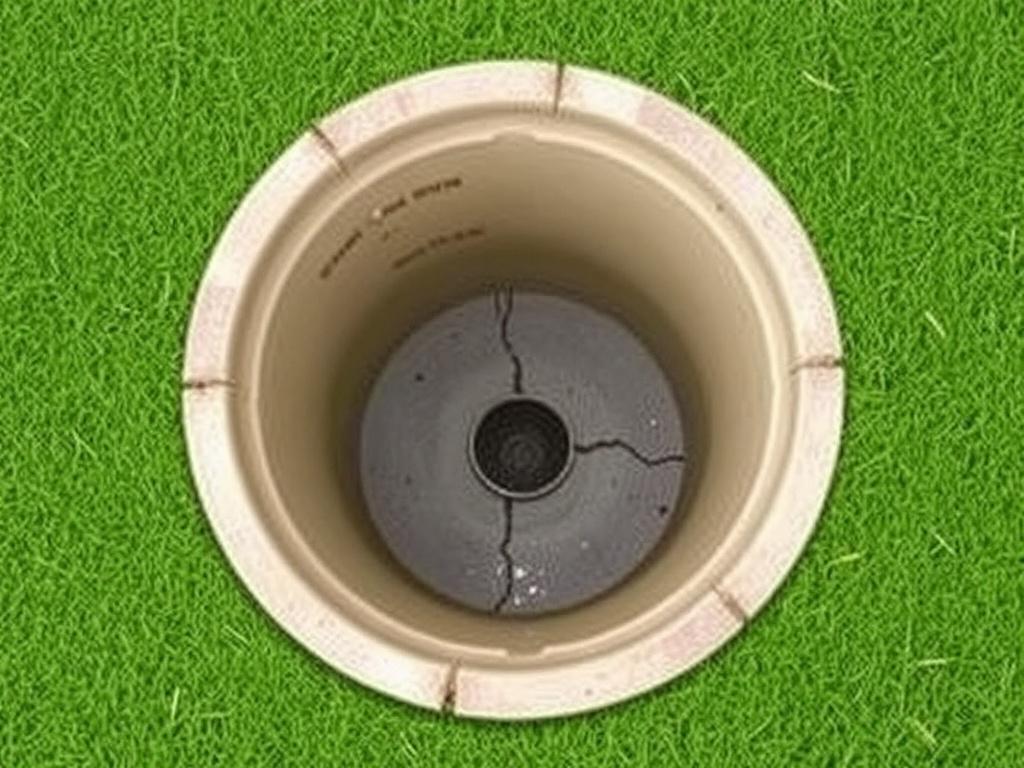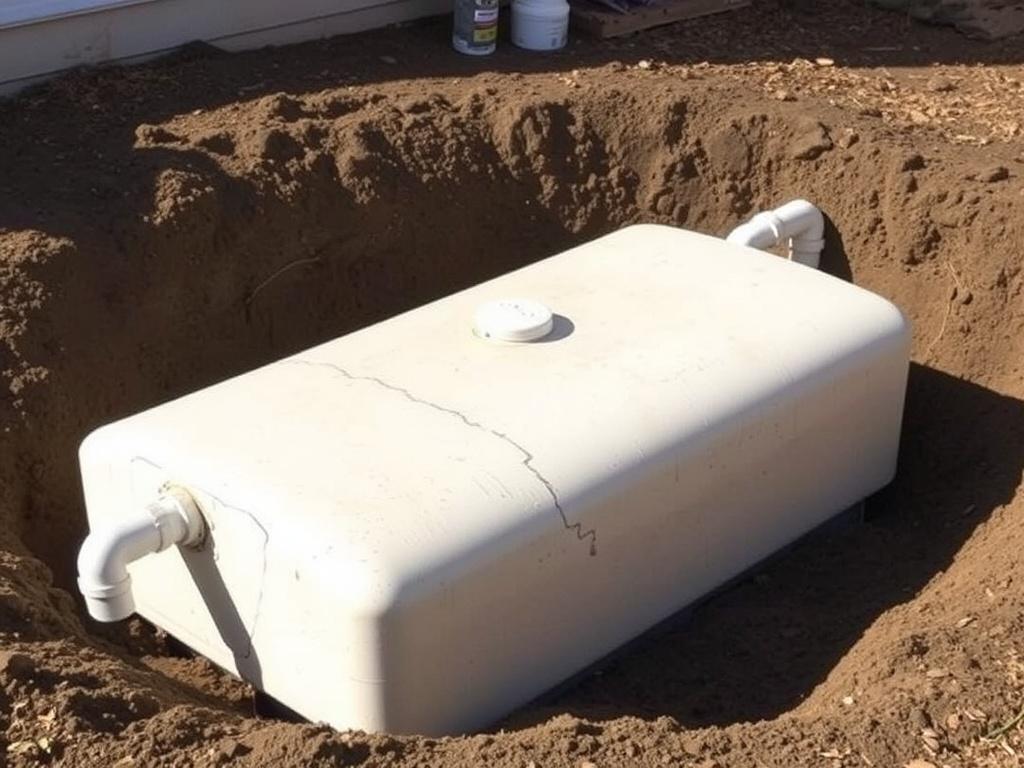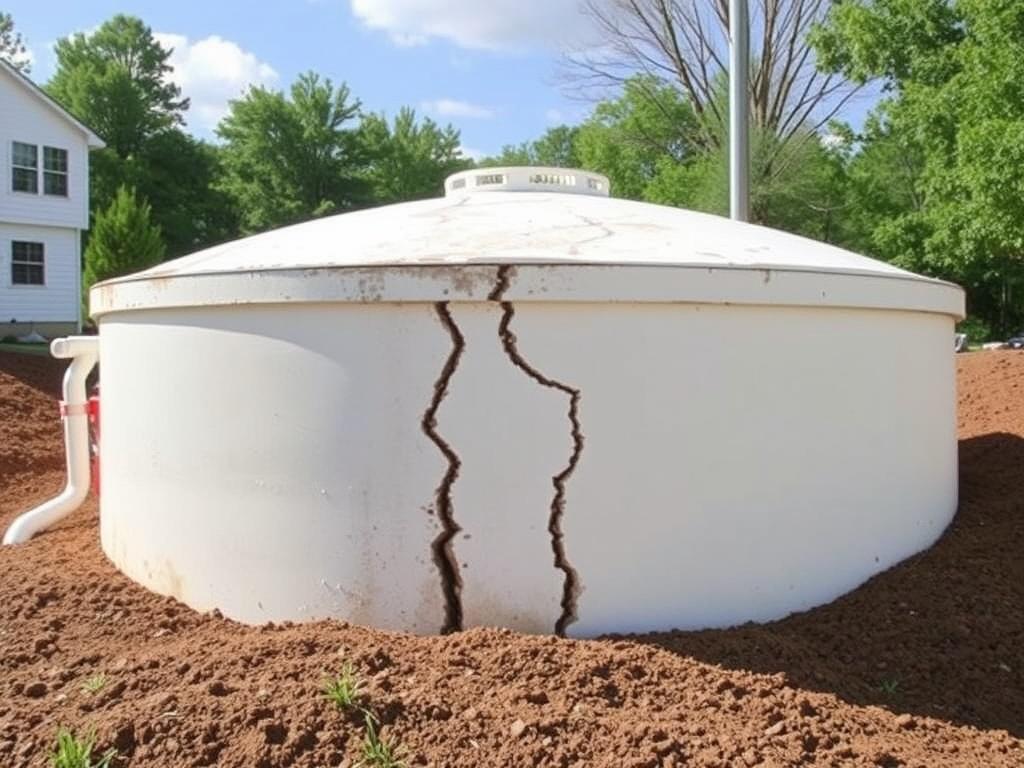Dealing with a cracked septic tank might not be the most glamorous task, but it’s one of those home maintenance challenges that simply cannot be ignored. If you suspect your septic tank has developed cracks or leaks, it’s important to address the issue promptly to avoid costly damages and health hazards. In this guide, we’ll walk you through the process of identifying, assessing, and repairing a cracked septic tank — all in clear, simple steps. Whether you’re a seasoned DIY enthusiast or someone just learning about how septic systems work, this comprehensive article will equip you with the knowledge to handle this problem efficiently and confidently.
- Understanding the Importance of Your Septic Tank
- Common Causes of a Cracked Septic Tank
- Signs You Have a Cracked Septic Tank
- Step 1: Confirming the Crack and Assessing the Damage
- Step 2: Preparing for Septic Tank Repair
- Safety First
- Gathering Tools and Materials
- Emptying the Tank
- Step 3: Repairing Cracks in Concrete Septic Tanks
- Cleaning the Damaged Area
- Widening the Crack
- Applying Hydraulic Cement
- Curing Time
- Additional Waterproofing
- Step 4: Repairing Cracks in Fiberglass or Plastic Septic Tanks
- Inspecting the Damage
- Using Fiberglass Repair Kits
- Using Marine-Grade Epoxy
- Final Inspection and Testing
- Step 5: Addressing Large or Complex Damage
- When to Call a Professional
- Preventative Measures to Avoid Future Cracks
- Helpful Tips for Septic Tank Care
- Cost Estimates for Septic Tank Repairs
- Common Mistakes to Avoid When Repairing a Septic Tank
- Environmental Considerations When Repairing Septic Tanks
- When to Consider Septic Tank Replacement Instead of Repair
- Tips for Hiring a Septic Tank Repair Professional
- Conclusion
Understanding the Importance of Your Septic Tank
Before diving into repair techniques, it’s crucial to understand what a septic tank does and why a crack can be a serious problem. Your septic tank plays a vital role in your home’s wastewater management system. It collects, treats, and disposes of sewage and wastewater from your household.
When your septic tank is functioning properly, it ensures that waste is processed underground safely, protecting groundwater and your yard from contamination. However, a cracked septic tank can cause untreated sewage to leak into the surrounding soil, contaminating drinking water sources, foul odors, and even causing severe environmental damage.
Noticing early signs such as slow drainage, foul smells around the tank, wet spots above the tank area, or sewage backups inside the house can indicate that your septic tank has developed cracks.
Common Causes of a Cracked Septic Tank

Before we get into repairs, it helps to know what might have caused the cracks in the first place. Understanding the common reasons can prevent future damage.
- Age and Wear: Over time, concrete or steel septic tanks can degrade and develop cracks naturally.
- Shifting Soil: Changes in soil conditions, such as drying out or excessive moisture, can cause pressure that cracks the tank walls.
- Heavy Loads: Vehicles driving or parking over the septic system can put pressure on the tank and cause damage.
- Poor Installation: An improperly installed tank that isn’t buried deep enough or leveled can crack under soil pressure.
- Tree Roots: Roots can infiltrate and damage tanks and piping over time.
Signs You Have a Cracked Septic Tank
Spotting a cracked septic tank early can save you money and keep your home environment healthier. Look out for common symptoms like:
| Symptom | What It Means |
|---|---|
| Slow Drains | Possible system blockage or leakage reducing efficiency. |
| Pooling Water | Wastewater leaking from tank leading to wet spots around yard. |
| Unpleasant Odors | Foul smells coming from tank area or drains due to leaking sewage. |
| Backups in the Home | Sewage backing up into toilets or sinks indicating tank failure. |
| Visible Cracks or Damage | Obvious physical damage noted during inspection or pumping. |
Step 1: Confirming the Crack and Assessing the Damage
Once you suspect a crack, the first step is to confirm it and understand its extent. You can do this by:
- Visual Inspection: Open the septic tank lid (carefully) and check around the interior walls if safe. Look for visible cracks or sections where the concrete appears worn.
- Professional Inspection: Consider hiring a septic professional who can use cameras or other diagnostic tools to inspect without draining your tank.
- pH and Contaminant Tests: Testing nearby soil or water for contaminants can indicate leakage from the tank.
- Monitor System Function: Keep track of performance issues like backups or odors.
Understanding your tank’s material is important because the repair method may vary depending on whether the tank is concrete, fiberglass, steel, or plastic.
Step 2: Preparing for Septic Tank Repair

Repairing a cracked septic tank isn’t something you want to rush into. Proper preparation will save you headaches later.
Safety First
Working with septic tanks can expose you to harmful gases like methane and hydrogen sulfide, as well as pathogens. Always:
- Wear protective gear such as gloves, goggles, and masks.
- Ensure the area is well-ventilated.
- Never enter a septic tank yourself unless trained and properly equipped.
Gathering Tools and Materials
Depending on the size and location of the crack, you may need:
- Concrete patching materials or epoxy sealants suitable for septic tanks
- Hydraulic cement (for concrete tanks)
- High-quality marine epoxy or fiberglass repair kits (for fiberglass tanks)
- Heavy-duty gloves, brushes, and trowels
- Caulking or sealant tubes
- Safety gear (respirator masks, goggles)
Emptying the Tank
Before repairing, the septic tank should be pumped out completely. This step is crucial because working inside a full tank is unsafe and ineffective. Contact a professional septic pumping service to empty the tank thoroughly.
Step 3: Repairing Cracks in Concrete Septic Tanks
Concrete tanks are the most common type and can develop cracks over time due to the reasons discussed earlier. Here’s a proven repair method for cracks in concrete tanks.
Cleaning the Damaged Area
Start by cleaning the area around the crack. Use a wire brush to remove loose debris, algae, or sludge that may prevent the patching material from adhering properly. Rinse with clean water and allow the surface to dry.
Widening the Crack
This might sound counterintuitive, but use a chisel or grinder to widen the crack slightly and create a “V” shape groove. This allows the patching material to hold better compared to applying it over a narrow crack.
Applying Hydraulic Cement
Hydraulic cement is ideal because it expands as it cures, creating a watertight bond capable of sealing leaks.
- Mix hydraulic cement following the package instructions.
- Using a trowel, press the cement into the widened crack.
- Make sure to fill the crack completely with no air pockets.
- Smooth the surface and remove excess cement.
Curing Time
Let the cement cure for at least 24 to 48 hours. Keep the area moist during this time to prevent cracking.
Additional Waterproofing
After the cement cures, applying a waterproof sealant over the repaired area can provide extra protection against future leaks.
Step 4: Repairing Cracks in Fiberglass or Plastic Septic Tanks
Fiberglass and plastic tanks require a different approach because concrete repair methods won’t bond properly.
Inspecting the Damage
Clean the surface around the crack with soap and water, then roughen the area with sandpaper to allow better adhesion of the repair materials.
Using Fiberglass Repair Kits
These kits typically include fiberglass mesh, resin, and hardener.
- Mix resin and hardener as per instructions.
- Cut fiberglass cloth or mesh to cover the crack, extending a few inches beyond the damaged area.
- Apply resin mixture to the area, lay the mesh, and then add more resin on top.
- Allow it to cure fully, typically several hours.
Using Marine-Grade Epoxy
For small cracks, marine epoxy offers excellent sealing properties.
- Apply marine epoxy directly into and around the crack.
- Smooth it out carefully.
- Allow to cure as specified.
Final Inspection and Testing
Once repaired, inspect the patch for any gaps or missed spots. Optionally, you can fill the tank with water and monitor for leaks before putting the system back to normal use.
Step 5: Addressing Large or Complex Damage
Sometimes cracks are so extensive that repair might not be practical or safe without professional help.
When to Call a Professional
- Structural damage or wide cracks
- Multiple cracks appearing simultaneously
- Corrosion or rust on metal tanks
- Repeated damage after repairs
- Suspected contamination of groundwater
Professionals can perform more thorough inspections, recommend tank replacement when necessary, and carry out repairs with specialized equipment.
Preventative Measures to Avoid Future Cracks
After repairing your septic tank, preventing damage in the future is key.
Helpful Tips for Septic Tank Care
- Regular Maintenance: Schedule pumping every 3-5 years depending on tank size and use.
- Avoid Heavy Loads: Do not park vehicles or place heavy objects over the septic system.
- Manage Landscaping: Plant trees and shrubs at safe distances to prevent root intrusion.
- Check for Soil Shifts: Ensure proper drainage to avoid soil erosion and tank pressure.
- Use Safe Household Products: Avoid harsh chemicals that can damage bacteria inside the tank or degrade the structure.
Cost Estimates for Septic Tank Repairs
Knowing the potential costs can help you plan your budget. Here’s a rough breakdown:
| Repair Type | Estimated Cost Range | Notes |
|---|---|---|
| Minor Crack Patch (DIY Materials) | $50 – $200 | Hydraulic cement, epoxy, sealants |
| Professional Crack Repair | $500 – $2,000 | Includes inspection, labor, materials |
| Septic Tank Pumping | $250 – $500 | Required before repair |
| Tank Replacement | $3,000 – $10,000+ | For severe or repeated damage |
Common Mistakes to Avoid When Repairing a Septic Tank
Repairing a septic tank requires attention to detail. Avoiding these common errors will save you time and money:
- Ignoring safety protocols and risking exposure to toxic gases.
- Failing to empty the tank completely before repairs.
- Using improper patching materials not designed for septic systems.
- Attempting to repair major damage without professional consultation.
- Not following cure times for repair materials before refilling or using the system.
Environmental Considerations When Repairing Septic Tanks
A cracked septic tank isn’t just a household problem—it has wider environmental impacts. Leaks can contaminate groundwater, harm plant life, and pose risks to animals and humans alike. When making repairs:
- Be mindful of disposing of old repair materials safely.
- Prevent runoff or spilled sewage during the repair process.
- Consider eco-friendly materials when possible.
- Report any large leaks or environmental hazards to local authorities.
When to Consider Septic Tank Replacement Instead of Repair
In some cases, a cracked septic tank is beyond repair. Signs that replacement might be more cost-effective include:
- Multiple cracks or structural weaknesses throughout the tank.
- Repeated repairs failing to stop leaks.
- Significant corrosion in metal tanks or extensive damage in concrete tanks.
- Changes in property use leading to greater wastewater volume requiring a bigger system.
Replacing a septic tank is a major project, but sometimes it’s necessary to protect your home and the environment.
Tips for Hiring a Septic Tank Repair Professional

If you decide to hire pros, here’s a checklist to help you choose the right contractor:
- Check for proper licensing and insurance.
- Ask for references and reviews from previous customers.
- Request detailed estimates including labor, materials, and timeline.
- Inquire about warranties or guarantees on their work.
- Ensure they follow local regulations and environmental practices.
Conclusion
Repairing a cracked septic tank is essential for protecting your home’s plumbing system, safeguarding your property’s environment, and maintaining healthy living conditions. Whether the crack is minor or extensive, understanding the right steps—from inspection and safety to choosing proper materials and techniques—puts you in control of handling this challenging situation. While some repairs are well within the reach of a confident homeowner, others demand professional expertise and judgment. By staying vigilant about your septic system’s health, performing timely maintenance, and addressing cracks quickly, you can extend the life of your septic tank and avoid costly emergencies. Ultimately, a well-maintained septic system ensures peace of mind and a healthy home for years to come.
Помогла вам статья?






